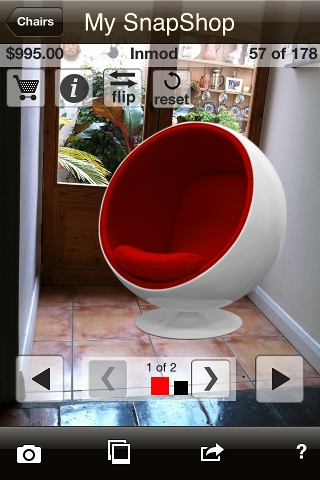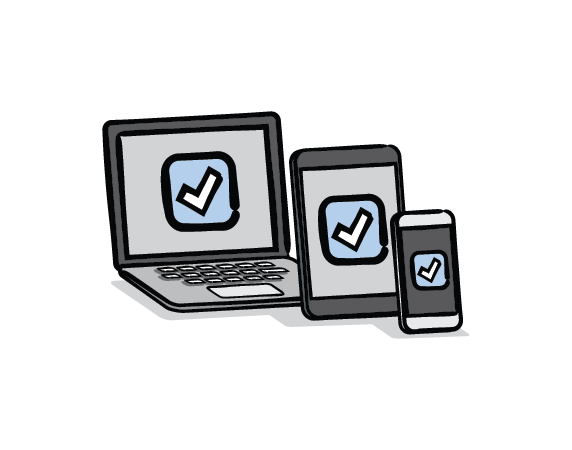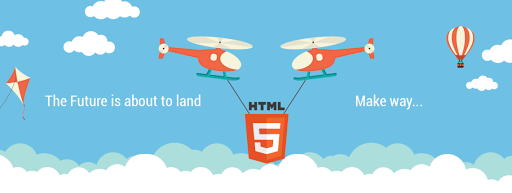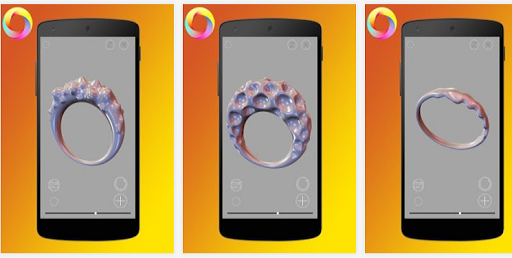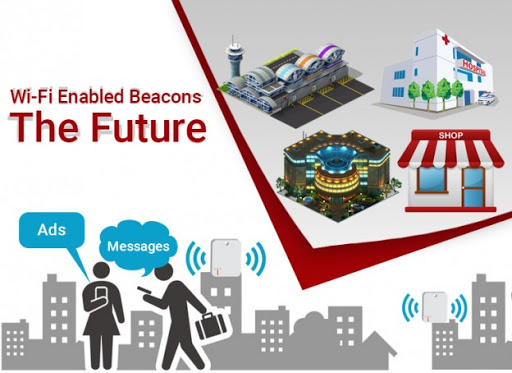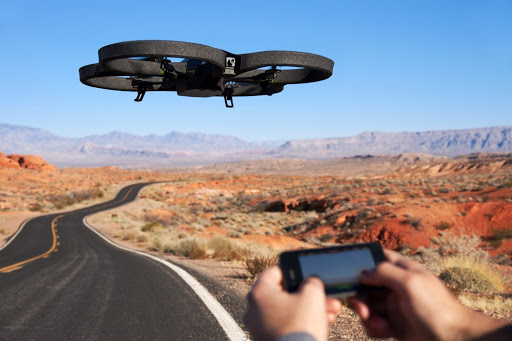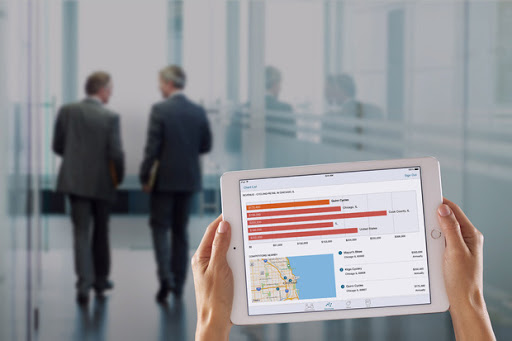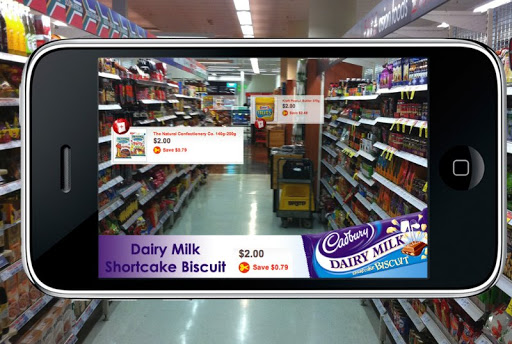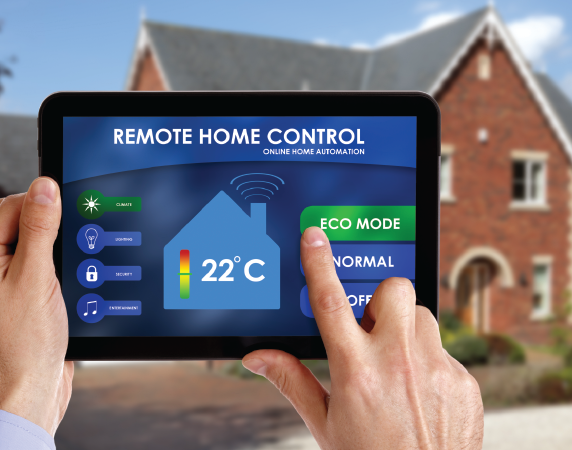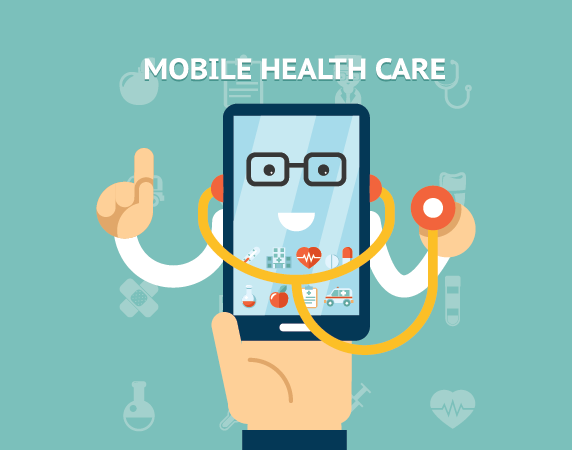Category: News and Updates
To explain the whole story, from the beginning to the end, in a sentence would be: “Parse was the most popular mobile backend-as-a-service (mBaas) for mobile applications, acquired by Facebook in 2013 and Facebook recently announced that it is completely shutting it down in a year’s time (by Jan 2017)!”
The Parse framework provides a hosted back-end infrastructure with unlimited opportunities for third party developers with its products like, Parse Push, Parse Core, Parse Social, etc., to build their mobile apps (Android, IOS, and Windows) by using a single SDK. Facebook’s announcement on its shutdown, followed by their migration tools and assistance, simply disguise a world of hurt for businesses that based their future on Parse. It’s shutdown has sent panic waves among teams who have their apps on Parse; their main concern being what to do next ? Many are looking for alternatives to develop apps without bothering about the backend, some try to take all the code from Parse to elsewhere and are confused as to which platform to use and trust.
What do you do now?
Relax! Think of it like a simple house-relocation, the whole migration doesn’t come without headaches, but is still in control with some wise moves. Let’s evaluate the actual impact of Parse shutdown in its true sense, and few smart options to overcome the trouble caused.
Who will be affected?
For now, people who have their apps built on Parse. If you have created apps using Parse backend solution, then you surely need a game plan and a skilled technical team to move to an alternate service. However, Facebook has open sourced the Parse’s source code, supplied database migration tools and provided enough time to move to your next option, so this isn’t the worst shutdown announcement ever, So chill. One year is plenty of time for you to move away from Parse or build apps on a trusted place.
And for those others chuckling at the worried Parse users, just be informed that you too are at the risk of such an issue, especially if your app dependents upon third party services. Developers might have ‘exception handling’ for when servicers are temporarily down, but what if the server has vanished forever? A disaster recovery plan will be always handy.
What are your options? (Alternatives to Parse/mBaaS)
The shutdown means you have to:
1. Migrate to another BaaS/ Parse alternatives: Find an alternative BaaS that has all the features similar to your App’s requirements, for Google has many developer APIs and backend services; Microsoft has Azure, or Amazon’s AWS.But of course this requires ample amount of customization to ensure your fit. However, be warned because, “Fool me once, shame on you. Fool me twice, shame on me!”
2. Migrate to a PaaS from one of the major cloud providers: Platform-as-a-Service is more generic and broader than Backend-as-a-Service and the vendors won’t lock you in that much. PaaS services from major players like, Amazon, Google, Microsoft and others are mostly part of their core cloud offerings and therefore is comparatively at lower risk of shut downs. This migration would mean serious efforts from the technical team to develop missing parts, but you can be at greater development flexibility while enjoying all benefits you had with BaaS.
3. Migrate your backend to a self-hosted instance of Parse: Parse Server is basically Parse that can be hosted on your own infrastructure. Your client side will thus remain the same and needn’t refactor the whole app to unplug the Parse SDK. Copy the Cloud Code of your app to the parse-server as described here to migrate your existing Cloud Code to Parse server. There is no Native Cloud code in Parse server and you will need to use replacements like, App Links. Yet, direct replacement is not possible, but you can have a trained developing team to generate these tags and deal with the non-trivial migration process. The issue here is, whether the community will continue developing and fixing Parse in future, since it’s already a zombie. You may also extend your current JavaScript from Parse into full-blown NodeJS application : If there isn’t too much complex scripts on Parse, adding CRUD operations on top of MongoDB database would be much less effort. This shall give you complete control over the backend and data, without having to be locked down into any platform.
4. Look for building your own backend now: Something that you definitely had issue with in order to have gone for Parse in the first place. But since we are more concerned about vanishing services at this point of time, with open source self-hosting, you can at least hope to get the ongoing maintenance from a developer community.
From similar examples of other shutdown notices, the initial chaos it creates and the slow emerging saviors, it’s always wise to wait for a month or two to see how the dust settles, and eventually decide what will work best for you.
Moving to another mBaaS? What should you look for?
The shutdown of Parse, StackMob, Proxomo and MobDB has left developers perplexed about the future of mobile-backend-as-a-service. Unless mBaaS comes up with a credible response to this question of vendor lock-in issue, I doubt any sane developer would touch this now. Hopefully there will be no “fool me three times”.
Developers can avoid reliving such nightmares by ensuring that their vendors don’t lock them in. Under any cases of acquisition or shutting downs, you should be given full control of your applications’ source codes. Be sure to check these with your provider if you consider using BaaS or mBaaS:
Developers can avoid reliving such nightmares by ensuring that their vendors don’t lock them in. Under any cases of acquisition or shutting downs, you should be given full control of your applications’ source codes. Be sure to check these with your provider if you consider using BaaS or mBaaS:
1. Do you get full access to their mBaaS source code (including the backend server and backend server administrative console and not just client side SDKs)
2. Can you continue running your app if they shut down (Ask them whether you can download run time components of your app and deploy it elsewhere without going to their site)
3. Who owns the IP (intellectual property) of your app components? Ask your vendor to demonstrate these to you; if they can’t show how this is done or probably has no reference to provide, like a customer who got this done, you are locked in to them!
Can Developers still trust 3rd party services?
With Parse shutdown people woke up to what “Vendor-lock-in” actually means in practice. Several factors like, the move to serverless computing (e.g. Amazon Lambda), have recently made mBaaS a lot less attractive as a standalone. And with the recent shutdown notice, Backend-as-a-service is presently facing a tough time.
However, It is definitely a tricky balance between choosing an mBaaS platform or building the mobile backend yourself. The favored suggestion is to do more work on Amazon with the option to fall back to Google, than to do less work on Parse but without any plan B.. As Dave Verwer, founder of Curated puts it:
“It’s always a tricky balance between using a BaaS platform like Parse, or building everything yourself. We’re all aware that any service we rely on could potentially go away at any time but there is none more disruptive than your entire back end! On the other side of the argument, you could spend years building everything you need from scratch and completely custom, then have the app not gain any popularity and have it all wasted. It’s a tricky problem and there’s no right answer.”
Yes, Parse shutdown has brought a lot of pain, but it has also drawn light into the hidden risk that developers who depend on 3rd party services are at. It’s terrible when something you count on becomes an ex-service, but as its result you wouldn’t want an “ex-app or business”. If you are affected by Facebook’s move, you have to make a plan change and a new game plan until there’s time. Fingent will be glad to be of service to you for any migration, or app development using your own backend. We can help you decide what will work for your business in the long run.
Still unsure about your options? Let’s discuss!
Stay up to date on what's new

Featured Blogs
Stay up to date on
what's new



Talk To Our Experts
We have seen the rise of certain revolutionary technologies over the past few years, like the IoT, Cloud computing and Big Data, bringing breakneck transformations throughout every industry. Being one of the greatest, irreplaceable inventions in life, the mobile industry is perhaps mostly impacted by all these emerging trends, constantly striving to bring the hottest trends at customers’ fingertips. In a short span of time, the smartphone alone has replaced the need for several other products and services, simply rendering them worthless. Not convinced?
What do you do these days when you need a dress, need to order your favorite food, hire a cab, perform a bank transaction, communicate with someone, or simply wants to entertain yourself with games, videos or social networking sites?
Grab your smartphone, right? Was this the case a few years back, when mobile phones could only place calls and send text messages?!
That’s how the mobile and mobile application industries are evolving. Today, we breathe, eat, sleep and live mobile.
So, how will be the Mobile app industry like, in the coming years? What trends will rule the smartphone application development? Let’s take a look:
More Augmented Reality, Virtual Reality based apps will come to play
AR and VR have been incredible technologies that made our lives resemble those in science-fiction movies, which once seemed impossible. AR has already revealed itself through mobile apps over the last years, from interactive map overlays to virtual showrooms. For instance, the SnapShop showroom app using AR technology lets users evaluate how particular furniture will look in their space. myNav, iOnRoad, Sky Siege are AR based mobile games already out in the market. This year we’ll see more and more businesses, from retail, e-commerce, entertainment, lifestyle to healthcare sectors creating AR based mobile apps to engage their customers and provide them better experience.
VR, though didn’t see a growth as big as AR, is not far behind. The technology that was mostly around entertainment and gaming, is now gaining momentum, with the advent of devices like the Oculus Rift, Samsung Gear VR, and Google Cardboard. The giants like, Facebook investing in Oculus VR (releasing this year) is a hint on how big its market will be.
Read more: Virtual Reality: The Revolutionary Force
Mobile Apps using Artificial Intelligence
Technology giants like, Google, Facebook, IBM and many others are investing in artificial intelligence, thus moving towards more complex computer algorithms. There are quite a few iOS and Android personal assistant mobile apps today that use artificial intelligence for smart decision making and stuff. Google Now and Apple’s Siri are apps having Natural Language Understanding (NLU), and are able to receive and understand direct instructions from the user, which according to many experts are a basic level of AI. The number of apps using AI will only increase in the years ahead.
App Security
Developers were pretty busy last year solving security issues with over 75% of apps that failed to meet even the fundamentals of security/privacy policies. Sensitive and confidential user information like, bank details and SSN become vulnerable if various apps and platforms using these fail to implement proper security protocols. The latest versions of iOS (iOS 9) and Android (Android 6.0 Marshmallow) have considered security and privacy as one of the significant parameters of app development and will continue to be of prime importance to developers.
Cross-Platform Development
Businesses are not just walking past the concept of fixed office spaces and immovable PCs or desktops, but are using varieties of smart devices, like tablets, smartphones, notes and so on, for a flexible working experience. Hence, having apps confined to be used on a single platform will become irrelevant. Apps that can be easily migrated from one platform to the other will be on demand and mobile app development will thus not confine to single platforms.
Read more: Native vs. Hybrid: Things to Know Before Building Your Next Mobile Application.
HTML 5
HTML 5 has been gaining popularity since 2014 for its ease to create hybrid mobile applications that work on multiple platforms. App developers may concentrate on building more HTML5 mobile apps (compared to Native apps) that are portable across different devices, platforms and operating systems. HTML 5 supports off-line data and rich Medias like audios and videos, making them work even when the device is offline.
Read more: Developing Native and Hybrid apps 101
Mobile Apps for 3D Printing
3D printing has been a technology that took the world by storm. With 3D printers becoming cheap and commercially available for affordable rates, the demand on mobile apps for 3D modeling and printing has increased. This year, 3D printing market is expected to rise to a trillion dollar market and we will also see smart apps focused on cloud and mobile CAD, interaction with physical world, and the like.
Beacon and Location-Based Wi-Fi Services
Wi-Fi will provide more than just internet access. Businesses will use beacon technology to understand where their customers are, and engage with them through relevant and personalized content sent to their mobile phones using the Wi-Fi. Beacon technology has reduced the gap between online and offline services in advertising and retail industries. Apple has already integrated the technology in their iOS to communicate with Apple’s iBeacon networks.
Read more: Different kinds of Beacon technologies and how iBeacons enhance customer experience.
Wearable, drones, and smart machines
The focus has shifted from consumer wearable to enterprise wearable this year. With more employees using wearables at work, businesses will require enterprise apps to manage and control efficient usage of these to increase productivity. Drones and robots were mainly limited to the locomotive industry, however, this year, a lot more robots will arrive, that consumers can really take home to simplify their daily tasks. With the drones and robots becoming common in markets, obviously we need to develop plenty of smart apps to make them work.
Read more: Wearable Technology-Dark Horse of Enterprise Workforce Efficiency?
Low Shelf Life Apps
Industries, like, Sports, Entertainment, Retail, and Media, may require apps that will work for a short period of time, until a particular event lasts or so. These are created temporarily for industries for instant gratification and needn’t last forever. For instance, companies may require apps during the FIFA world Cup season, to conduct events or reach out to the fans during that particular period of time. More industries will use such short-lived apps strategy in years ahead. Need to build such an app? Let us help.
Enterprise App Consumerization
Earlier, enterprise apps were built with strong foundation and less importance to the design. However, with more and more employees starting to use mobile devices at work, user experience has become a central factor and enterprise apps are built to look more like consumer apps. The trend has continued through 2014 and is expected to change the way enterprise software will look and will be used.
In- App Advertising, Purchasing, and Location Based Mobile Advertising
Mobile ads will not be limited to just banners, but various other ad formats will be experimented, video ads leading the line. Studies show that in-app advertising is 11.4 times effective than standard form of banner ads. It will become more common and profound as users spent more time in mobile apps compared to website browsing, and will be a major source of revenue for app developers. This year the ads will mature further by getting the location-based technology, which will help advertisers take the relevant offers to the right customer at the right place and time.
Big Data and App Analytics
Performance tracking and decision making will become even more focused with smart data collecting and evaluating metrics in apps. Developers will concentrate on providing better performance insights to clients through data visualization and analysis. There will be thus more focus on big data and app analytics.
Smart Cities, Homes, and Offices
As more and more things get connected in the Internet of Things, there will be better ways of managing traffic, providing parking solutions, ensuring safety, connecting and controlling homes, offices, vehicles and equipment with mobile phones and so on. App developers will be really busy creating secure apps that will help people control their connected equipment remotely and safely.
mHealth
With more wearables, sensors and tracking devices getting into the medical sector, the mobile app consultations will become more matured this year. Medical field will be largely influenced by the technologies, and apps will be the binding units that will connect healthcare with IT. There will also be dedicated mobile health apps to track health of users, diagnose a variance, alert check-up etc.
Read more: Emerging Trends in Healthcare IT, 5 Pointers to Make Sure Your Healthcare Application is Future Proof, Top 5 Technology Trends Driving the Growth of Healthcare, Healthcare – Gearing up For the Internet of Things
Being one of the leading mobile app development solutions providers ourselves, we are as excited as you about the latest trends in IT, and are constantly evaluating the emerging trends and opportunities to remain the cream of the crop option for our clients. What other trends do you see rising in mobile app development in the coming years? Share your thoughts with us.
Image credits: SnapShop, think3d, bfonics.com, androidpolice, CIO
Stay up to date on what's new

Featured Blogs
Stay up to date on
what's new



Talk To Our Experts
The holidays are over, most of the Christmas décor have been packed up or are still waiting at the sideways for the garbage pickup. And it’s that time of the year again, when we start with new hopes, resolutions, plans and budgets for the New Year head. Last year, we saw massive technology breakthroughs, some gaining immediate success and application, and certain others setting the stage for future innovations. To name a few, the Internet of Things, the Magic Leap, 3D Printing, Car-to-car communication, Project loon, Smart Machines and Apple pay were top technologies of 2015, that pretty much left us awestruck by its pace. If that has been in the past year, imagine what technology will have in store for the year 2016!
Pop!!! I just popped your imagination balloon to bring light to the international Consumer Electronics Show (CES), happening at Las Vegas from 6th to 9th January 2016. The event brings together all the stunning technologies that will probably set 2016 on fire- the tech fire, leaving all of us super thrilled and anxious about the ‘coming soon’ technologies. The marketplaces/TechZones at the giant exhibition floor will showcase terrific technologies, ranging from wearable to unmanned systems, which will make our lives like one in the fantasy world, very soon. For CXOs, managers and other key decision-makers of startups and SMBs, this means a critical opportunity to bring their cool products on limelight. The startups exhibiting in Eureka Park Marketplace at CES have been getting over $1bn collective investment since 2012.
The members have been preparing for the event for weeks and there are a lot of speculations from the usual CES suspects about what we will see at the annual conference. The following technologies will have a major role this year:
Personalized wearable
The Google Glass, Apple watch, Skully motorcycle helmet, Tag Heuer and Oculus rift have been a heck of wearable last year. This year the market is even riper and is going to be attractive with more personalized offers. No surprise because, the wearable sales are predicted to cross the 29 million units mark in 2014, to a whopping 172 million by 2018 and its global revenue will see a 12-fold increase from that of 2014. There will be a lot more smart watches from legacy brands, life-saving wearables, women’s wearables, commodity wristbands, mind reading tech, wearable toys, smart clothes, Invisibles, low-cost wearables and next-gen fitness trackers; however, the big players like Apple, Google or Pebble might not reveal their surprises so soon. Sensors will pop up in everything, from sneakers to dresses. Hearables (smart headphones) – adding sensors to earphones for wireless transmission, communication, medical monitoring and fitness tracking purposes, will be a thing this year. However, we might want to wait until spring to know where the wearable trend is actually heading.
More Rideables
Anything with wheels will also have sensors and electric motors attached to it. Electrification will become eminent and there will be many small electric scooters, skateboard, and bikes with advanced battery life and bearable budgets. Luckily, the use of hover boards is banned at the convention center. We are yet to see how different will they be from last year’s participants.
The ‘All-Connected’ dream Homes
Your dream home will seem even more fantasized, with everything in it connecting and talking to each other to make the everyday tasks automated, quick and easy. Apple HomeKit, Google Brillo and Samsung SmartThings are clearing out the mess to make connectivity creep through all areas of your home and make all equipment more integrated. We’ll see the beginner tangible pieces of the Internet of Things, helping the things get connected and speak the same language in few years from now.
AR and VR are like the hosts
Augmented reality and Virtual reality are always present in their different manifestations at the CES ground. HoloLens and Magic Leap are down the lane, Oculus has yet to reveal the first look of Rift headset or its touch controllers, either of which can occur at CES 2016. Stepping up the gaming zone, VR is expected to become mainstream this year and companies will have the technology used for real day applications. Considering the momentum it has gained now, it is fair to expect many other companies, like PC hardware and accessory manufacturers to reveal their VR surprises at the show.
Drones everywhere
A major part of the CES floor will be reserved for the ‘unmanned systems’ which will include drones that can be used for anything from travel, sports, photography, construction, search and more. Drones will come with creative upgrades, with better sensor integration and intelligence to carry out your specific needs smartly. The event will also include security, risks and safety discussions and future implications of such gadgets.
Cars become a must-have gizmo
CES showcases high technology cars over the years, that it more or less resembles the Detroit Auto show. This year, cars will be even smarter at the show with technologies like, smartphone connectivity, electric vehicles, in-car infotainment centers, and self-driving technology acting together. Moreover, Faraday Future, a secretive automaker in California has revealed its first all-electric, non-polluting sports car concept. Several other manufacturers like, General Motors will reveal the production versions of their next electric car. All major players in the industry, from Tesla to Toyota will be there unfolding their surprises at the event.
Apart from these, security is going to be a major subject of discussion at the CES 2016. With the Internet of Things being a source of numerous security concerns, as different companies collect more and more personal and confidential data of consumers, security is the biggest focus at the event this year.
So, let’s look forward to the event kicking off tonight, to bring us some amazing technology tricks.
Image courtesy: The Verge
Stay up to date on what's new

Featured Blogs
Stay up to date on
what's new



Talk To Our Experts
Humans are unbelievable; they say they are dying to have the latest gadget, and a week after getting it, it becomes perhaps the most boring thing! They crave for a new car, and a month later the new car is in the lobby covered in all dust and mud! It’s difficult to predict what turns them on and what makes them bored. And funnily, boredom is the only true companion for them most of the time, because, it comes back to visit every now and then.
The same is the case with social media. I log off because I’m bored. And I log back in five minutes because I’m bored. There is a difference here though, every time I get bored with the popular social media like, Facebook, the company manages to bring up something that redeems its X-factor in my eyes. A latest example to site may be Facebook’s “Safety Check” tool that helped people to connect to their friends and relatives during the horrific events in France. I really appreciate the way social media unite during crisis; it renews my faith in humanity.
Facebook is out with another cool feature to help its users manage their smartphone notifications. Iphone has got its Notify app, notifying users about the latest news about ‘the things they care’ about right on the lock screen. On launching the app, users will be asked to select the channels of their interest (sports, weather, movies, etc.), managed by over 70 sources like Buzzfeed, ABC, GQ Magazine, Entertainment Tonight and The Weather Channel. Whenever there is a new headline in the category it appears as a notification to the user, where the user can swipe left and right from the lock screen to read the story and save it for later/ share with friends respectively.
How Notify App can get on your nerves
However, there is chance that you get overwhelmed with all kind of notification from the different channels you select. As it can streamline all notifications from the different apps into one single app, the app successfully meets its goal of making users use Facebook all the time. Having your phone’s notification light blink all the time with these many notifications and having the Facebook app run always in the background can drain considerable amount of your battery. Facebook have currently limited users’ access only to content from those sources it has partnered with, so it won’t still act as your complete news/ updates alert tool. This would also mean that you will get candy crush and other such invites as notification in phone, which can be quite distracting at times, though you can turn off notifications individually for such apps. The lock screen always tends to be a busy place where users want to swipe off fast to be able to use their phone; a lock screen filled with notification can distract the user from his intentions.
Application in work environments
Having said all that, a notification system for the real time environment like the work environment will be very effective in modern work culture, where there are an increased number of mobile workforces spending less time in typical office premises. According to a survey by Forrester Research, 44% of workers use their smartphones in work. Three out of every five workers say that their work is no longer office bound, and they need not be in offices to be productive. Such notification apps can be used in work environments to send, receive, track or respond to operational or emergency alerts from the SAP, ERP or CRM systems in the enterprise. The notification app will allow the dispersed workers to be connected and perform important tasks even when they are not in office. The managers can anytime oversee the activities, or access important documents, like invoices whenever a requirement arises. The app is handy to remind critical tasks or about upcoming events even when the employees are in offices. The notification works over cellular networks and Wi-Fi, which enable it to inform even employees on business tours to be aware of critical office events or tasks. Employees can use such apps to create unique messages and send it out to individuals or pre-defined groups throughout the enterprise right through their smartphone. For instance, if the marketing head wants to assemble the entire marketing team for a meeting next day, he could simply use the app to send out notifications/alerts to the members. It can send alerts or receive alerts from connected individuals at no charge unlike the usual sms alerts.
Facebook’s notification app is a powerful tool that finds application in various ways in different areas, just like the latter scenario. It offers a flexible, reliable and powerful way to stay connected, to communicate, and send notifications wherever the members are, enhancing business interactions, protecting resources and increasing operational efficiency. AWARE Mobility, for instance, is Fingent’s unique enterprise notification application based on specific business conditions using details from your SAP ERP system that has been configured in AWARE. Aware fits into any part of the SAP ecosystem, to help organizations connect with their members and keep them updated about the business processes via alerts, warnings or information messages, anytime anywhere on their Android or iOS smart devices. Our experts can help you with any additional information required.
Image courtesy: Radu Bercan / Shutterstock.com
Stay up to date on what's new

Featured Blogs
Stay up to date on
what's new



Talk To Our Experts
Field service management industries have now reached a tipping point of transformation; so how has your business
ensured to stay on top of it? How does your field operation compare to the best standards in the industry? How well has the internet helped to leverage its efficiency and impact?
The webinar “Transforming Field Operations with the Internet”, hosted by Fingent on 17 December 2015,
provides insights to a range of internet technologies that can help improve delivery and management of services – from simple low-cost options to more sophisticated alternatives. The ever so powerful Internet and the cutting edge technologies, like the Internet of Things, smart device integration, and advanced analytics are making the field service business operations predictive rather than responsive. The field service technicians are already better equipped with intelligent, online apps that gather and deliver real-time data and analytics at their fingertips to enable quick strategic decision making, security, faster operations and easy processes. These efficient field operation practices have a significant impact on customer satisfaction, customer retention rates and ultimately, productivity and profitability.
The smart players of the industry are already on the hunt for strategic trends in the field that can give their business a forward push among other competitors in the market. Has your business entered the bandwagon yet?
Don’t miss this opportunity to learn how your field service business can excel with modern apps, the Internet of Things and software.
Meet our Hosts
Stephen Cummings
For over 25 years, Stephen Cummings has provided innovative software solutions to enterprises large and small, enabling them to become more collaborative and more efficient.
Efraim Burgos
For over 15 years Efraim Burgos has helped Enterprises such as Samsung, Sony, Time Warner, organize their field service teams for higher efficiency.
Date: 17th December 2015
Time: 2 p.m EST
Stay up to date on what's new

Featured Blogs
Stay up to date on
what's new



Talk To Our Experts
According to Gartner, a strategic technology trend is one that is likely to or has the potential to have a significant impact on the organization, like the chance for a disruption to business or Information Technology users or the need to make a huge investment etc. These are all business decisions that are likely to affect the organization in a huge way in terms of its long-term goals or initiatives.
It’s that time of the year again when organizations start charting out their strategic technology plans for the coming year and prepare themselves to meet the resources and expenses for the same. What are the trends in technology that most organizations are likely to adopt in the future?
Here is a list of the top 10 strategic technology trends as per Gartner, that are likely to affect digital business opportunities and processes:
The device mesh
Device mesh is a term used to describe the expandable endpoints, or in simple words, the devices that people use to access applications or information and also to communicate and interact with people through social and business communities. It includes devices like mobile phones, wearables, home electronic devices and automotive or environmental devices as well. Most of these devices are almost always connected to back-end systems through various networks these days. But sometimes, they also have been working in isolation from one another. According to Gartner, we can expect connection models to diversify and expand to facilitate greater coordination and interaction between devices to emerge. Now, as far as line managers are concerned, this would probably mean better coordination between various departments in the organization and therefore, better ability to ensure that all employees are on the same page when it comes to progress in work.
A continuous user experience
As a result of the device mesh, a new continuous and ambient user experience is formed, with deeply engaging environments and virtual reality being just a part of it. This leads to a continuously flowing user environment, that helps to save time and space across a changing set of devices and interaction channels, and also merge physical, virtual and electronic environments together as users move from one place to another. David Cearley, vice president and fellow at Gartner, feels that these advanced experiences will go on to become a major differentiator for Independent Software Vendors (ISVs) and enterprises by 2018. This again contributes to bringing different departments in an enterprise closer and hence makes it easier for line managers to monitor and supervise his team.
3D printing
In 3D printing, there have been several huge advances in terms of materials used like nickel alloys, carbon fibre, glass, electronics, pharmaceuticals, conductive ink, electronics and the like. These improvements also drove up the user demand for 3D printing, as the practical applications of 3D printers has expanded to different sectors like aerospace, military, medical, automotive and energy. According to Gartner, the growing range of 3D printable materials will drive a compound annual growth rate of 64.1% for enterprise 3D printer shipments by 2019. And these improvements actually entail a need to re-plan assembly line and supply chain processes to make use of 3D printing.
Information of everything
The digital mesh, mentioned above, entirely makes use of, produces and transmits all kinds of information, ranging from audio or video to sensory and contextual information. Information of everything seeks to address this inflow with the help of technology and strategies to combine data from all different data sources. Such information has always existed everywhere. It was due to the lack of capabilities to classify and analyze them, that always made such data incomplete, isolated or unavailable. But now, with advances in semantic tools such as graph databases and other fast emerging data analysis techniques, we would be able to bring more meaning to the usual rush of information.
Machine learning
Machine learning makes use of certain Deep Neutral Nets (DNNs), that have capabilities far beyond regular computing and information management, to produce systems that can independently learn to perceive the world on their own. As discussed, the large influx of information and its complexity makes it infeasible and also uneconomic for manual analysis and classification. That is where DNNs succeed, in addressing the challenges arising from the trend of ‘information of everything’ and in making machines intelligent.
DNNs are advanced form of machine learning applicable to large complex data sets, that enable machines (hardware or software based) to learn for themselves, all kinds of features in their environment, from the tiniest of details to the most complex ones. As this area is rapidly progressing, organizations, more specifically, line managers, need to figure out ways and means of using these technologies to gain competitive advantage.
Independence
As a consequence of the digital mesh and advanced machine learning put together, there is a whole range of smart machine implementations like Virtual Personal Assistants (VPAs), robots, autonomous vehicles and smart advisors, that have a huge impact, not only on the physical front, but also on the software side. VPAs like Google Now, Cortana and Siri, are the perfect examples of an ambient or continuous user experience provided by autonomous agents. These agents are soon becoming the main user interface in most systems, by which people can literally talk to the apps, rather than interacting with menus and buttons. Line managers and IT leaders need to find ways to use such autonomous agents and things, to augment human activity and free people from work. Although, we must keep in mind that this is a long-term phenomenon that is likely to evolve and expand rapidly over the next few years.
Advanced adaptive security
Digital business these days, with an algorithmic economy and a fast emerging ‘hacker’ industry, increase the threat platform for an organization. Regular security methods like perimeter defense and rule-based security would be inadequate, especially since organizations are now making use of more cloud-based services and open APIs for customers and partners to integrate with their systems. Line managers need to figure out new, advanced, adaptive security techniques like application self-protection through user and entity behaviour analytics and the like.
Advanced systems
The device mesh and smart machines call for high level computing architecture to make them viable for organizations. There are several high powered and super efficient neuromorphic architectures that can provide this push. With the help of field-programmable gate arrays (FPGAs), neuromorphic architectures have several significant benefits like, “being able to run at speeds greater than a teraflop” with high energy efficiency. According to David Cearley, “Systems built on GPUs and FPGAs will function more like human brains that are particularly suited to be applied to deep learning and other pattern-matching algorithms that smart machines use.”
Mesh app and services
According to Gartner, the traditional monolithic, linear application designs, that is, the three-tier architecture are leading towards a more integrated approach: the apps and services architecture. With software-defined application services, this new design enables web-scale performance, flexibility, and agility. Microservice architecture is another emerging design for building distributed applications that support agile delivery and scalable deployment, both on-premises and in the cloud. Containers are also emerging as a useful technology for facilitating agile development and microservice architectures. Development teams must create new architectures to provide agile, flexible and dynamic cloud-based applications with similar user experiences that comprise the digital mesh.
IoT platforms
Internet of Things (IoT) Platforms actually compliment the mesh app and services architecture. The various management, security and integration standards of the platform form the basic set of capabilities for building, managing and securing elements in IoT. It basically constitutes the work behind the scenes, done from an architectural and technological point of view, that make IoT a reality. It is an essential part of the device mesh and continuous user experience.
As is evident from the above technological trends, it is a “one-thing-leading-to-another” scenario, with each of the likely trends linked to the other. The device mesh has a lot of consequences and the ambient user experience, being one of those, has its own separate consequences.
All of these strategic technological trends mean more coordination and interaction between departments in an organization. For line managers, who know exactly what their team needs and is capable of, technology is literally going to be their best friend, who understands the team just as well. In all, with all these advancements, it looks like this year will be a year of transformation to the next level yet again, just like the previous was.
Stay up to date on what's new

Featured Blogs
Stay up to date on
what's new



Talk To Our Experts
What is the first thing that comes to your mind on hearing the term, Virtual Reality? Do you get images of Neo and Morpheus strolling about in “The Matrix” or is it that of Johnny Quest with his father fighting it out in their “other world”. Either way, you are about in the right track. To think that these were characters created as part of the fantasy world in the past.
Virtual reality is a concept that is fast becoming common and popular these days. It opens a whole new range of exciting opportunities with it as well, especially in the world of gaming. Leading techs are already in the game, with their much-anticipated products such as Facebook’s Oculus Rift, Microsoft’s HoloLens, Sony’s Project Morpheus and a comparatively low-cost entry into this field, the Google Cardboard.
A lot of these devices are already being used in a number of industries across the world, as virtual reality is one of the most versatile technologies ever to be innovated in the recent past. To know what the hype is all about, let’s take a detour to find out what virtual reality is.
What is virtual reality
Virtual Reality is basically a concept in which computer technology is used for creating a simulated three-dimensional world. One in which the user can manipulate, maneuver and explore stuff while experiencing a feeling of actually being in that world. Nowadays, it is also known as Virtual Environment. Though there are different theories and opinions on what exactly comprises a virtual reality experience, the basic constituents are:
- three-dimensional, life-size images from the user’s point of view
- the power to monitor the user’s movements and change the images and features in the virtual display to reflect the changes in perspective
There are several devices and applications these days that have been created solely to achieve these goals.
A peek into how it works
The user feels a sense of “immersion” on being in a virtual reality environment. Immersion refers to a feeling of being inside or part of a particular world. Once the user starts interacting with the environment, he gets into state of “Telepresence”. Telepresence is a combination of the sense of immersion and interaction with the environment.
A proper Virtual Reality environment will actually make one feel detached from the real world or real surroundings and get you to focus only on your existence in the virtual environment. Computer Scientist Jonathan Steuer says, “Telepresence is the extent to which one feels present in the mediated environment, rather than in the immediate physical environment.”
Devices are designed by the developers with the help of technology to create these feelings among the users and provide rich virtual reality experiences.
The future
The two main custodians of larger-than-life experiences – the gaming industry and the film industry are the pioneers in using virtual reality for business. They are likely to take virtual reality to new heights and set the pace for other industries as well.
For example, the 700 billion dollars worth glamour industry in the United States, Hollywood uses virtual reality to make amazing movies. Nokia’s new Camera Ozo, is likely to become a huge hit in this regard. With the ability to capture audio and video in 360 degrees, Ozo has been reported to give the most amazing experience with surround sound and images. Users actually felt the voices in their surroundings and were able to turn around and see the characters talking.
There are a number of other companies also looking to invade the film industry like Samsung.
The gaming industry too has a fairly large amount of loyal followers who are highly enthusiastic and encouraging about new innovations. For example, Rebellion, the leading game makers are looking to launch a virtual reality integrated version of their old 1980s classic Battlezone. There are also other companies yet to set their feet into this huge wonder.
Tourism is also another industry which is starting to make use of virtual reality with the South-African tourism being the pioneers. Their shark diving experience is something that is likely to become the next big thing leveraging virtual reality.
From the looks of it, this is already starting to be a revolution which is not going to stop with the present day. Into the future, maybe we’ll have people watching pyramids being built in the early days of Egypt or maybe how the Empire State building was set up in America or watch a play in the original Globe theatre. Books could also be made into jaw-dropping movies or even games with virtual reality supported cameras. We have tons of talented developers waiting, with all the skills to ideate, conceptualize and produce amazing worlds for us to explore and experience. All we need to do is wait for it.
Stay up to date on what's new

Featured Blogs
Stay up to date on
what's new



Talk To Our Experts
According to Mashable, Australian schools from now on, are going to replace History and Geography with coding as per their new digital technologies curriculum. As reported by The Australian, this new curriculum ensures that 21st-century coding is taught in primary schools from year 5 and programming is taught from year 7. This is as part of Australia’s new move to focus on STEM (Science, Technology, Engineering and Math) subjects at a primary level. Education minister Christopher Pyne made this last act right before he became Minister for Industry, Innovation and Science.
Pyne said, “High-quality school STEM education is critically important for Australia’s productivity and economy well-being, both now and into the future.”
He also talked about the need to train teachers for this new approach in teaching. Earlier this year, he had mentioned the need to strengthen the country’s skills in science, technology, engineering and maths and also digital skills that are essential for the technology-oriented environment in this 21st century as well.
For this purpose, the Government of Australia will be putting in 12 million Australian dollars into four separate STEM areas. That is, computer coding introduction, innovative maths curriculum development, a site for a P-Tech styled pilot school and summer schools that provide funds for underrepresented students in STEM. Christopher Pyne said, “We know that as computer-driven smart-technology expands into every aspect of our recreational and working lives, there is an ever-growing need for highly skilled workers in this global growth industry. All children will need to understand is computational thinking and how it can contribute to their future.”
Similar successful programs have been run by the United States and the UK as well, both of which had been quite successful. For example, Code.org and “Hour of code” which were implemented in the United States with the help of Google and Microsoft. The UK introduced its curriculum last year. Following their path, the Australian Govt. also seeks to equip its children with the necessary skills to work in a technology-filled world.
Estimates say that up to 75% of the rapidly growing occupations in Australia, are most likely to require excellent skills in Science, Technology, Engineering or Maths, that is the STEM subjects. Such being the importance of technology education, it seems like the right thing to do for Australia. As a matter of fact, it is actually high time that they implemented this concept because, this has been on discussions for quite some time now, especially among Australia’s top technology executives such as Atlassian’s Mike Cannon-Brookes. He said, “Technology education in primary and high school is going to be one of our biggest fails as a country in 20 years time if we don’t fix it and it may already be too late if we don’t move very fast.
If you look at what other countries are doing, we’re miles and miles behind and I think it’s as critical as Maths or English to every single job that’s going to be done in the economy in 20 years time and education takes a long time to flow through.”
With all this, it seems like the world is slowly coming to terms with the fact that technology is not only here to stay, but is bound to improve and that technological disruption is not really a choice, but a way of life. As children get introduced to technology at their young age, they get the chance to adapt themselves to it and will also be skilled enough to survive as technology takes over most industries. With the theoretical knowledge, they will also learn practical side of the Science, Maths and everything in their curriculum that makes technology possible, and thus have a basic understanding of how things work.
Even though this concept has been approved by most people, their Prime Minister, Tony Abbott was not quite supportive of it. He said that he didn’t see the point in teaching primary school children coding and programming.
Stay up to date on what's new

Featured Blogs
Stay up to date on
what's new



Talk To Our Experts
Samsung, the South Korean Electronics titan, is reportedly planning to follow the footsteps of Apple. According to Forbes, the company is likely to launch a new smartphone leasing program for its Galaxy range of smartphones in the U.S market. Through this system, Samsung intends to allow its consumers avail a new mobile device, like the Galaxy S6 or the Galaxy S6 Edge on a monthly installment basis. This program is similar to the one launched by Apple less than two weeks ago.
Forbes said, “ Samsung may be launching this leasing program in the next several months, although that timeline may accelerate.”
Apple had announced its iPhone Upgrade Program in September at an event where it also launched the iPhone 6s, 6s Plus, the iPad Pro and an updated version of the Apple TV. As per the program, Apple phone users will be given the privilege of buying iPhones directly from the Apple Store, rather than through carriers. It allows users to get new iPhones every year through Apple Care, with a two-year contract starting at a very affordable rate of $32 a month. Which means, they get to upgrade each year to the latest version if they desire to do so.
Apple’s Upgrade program came at a time when U.S customers were using the lengthy subsidized plans of big wireless carriers for smartphone hardware and a result were locked in two-year contracts. Now, most customers are left with no option but to buy their own hardware, now that the wireless carriers have withdrawn. Such lack of subsidies had led to a decline in sales of high-end phones like Apple’s iPhone and Samsung’s Galaxy series. This was probably what made Apple introduce its own program to enable a larger share of its customers purchase its highly priced hardware easily. So basically, through its program, Apple makes it possible for its customers to upgrade their iPhones on a regular basis, much easily than with the traditional carrier plans and also offer better value than other similar U.S leasing programs like that of AT&T and Verizon.
Now, in the same way, even Samsung plans to make its devices easily accessible to its customers. I would say it’s a smart move as it can attract new customers who are probably looking to get a relief from two-year contracts. Even though Samsung has announced its plan to be released in the next few months, it could arrive sooner than that because the company is working hard to bring its program to the market as soon as possible. However, for the time being, Samsung hasn’t revealed its pricing strategy for the program. Hence, we will have to wait in anticipation to see what Samsung has in store.
So, now that there are two smartphone companies out to provide smartphones on lease, and since customers can hardly wait to avail them, leasing seems to be the new “in” thing. What makes it so popular? How does it benefit users and what are the disadvantages that can inhibit its adoption?
Pros and Cons of Smartphone leasing
The most important factor for the popularity of smartphone leasing is definitely the fact that there is no upfront fees required. Even though you don’t own the smartphone, you can use it for a set period of time, then give it up and upgrade to a new device. The monthly payments are also quite reasonable which makes it affordable for everyone. Also, you get frequent and sure shot upgrades, almost every year, with the option of purchasing the phone at the end of the period. Of course, it all depends on the lease plan which varies with each carrier. When you own a smartphone, you only have the option of upgrading your phone every two years. With all these benefits, more people are moving towards leasing rather than owning smartphones and spending a lot of money on them. When there is an option to rent or lease technology, people would most certainly choose to go for companies that can provide such benefits.
Although, the fact that you don’t own the device is a major con, as you need to return the phone in good condition at the end of the lease period even it is for an upgrade. The customer will be held liable for all damages which is not the case when you actually purchase a smartphone. Moreover, you can only terminate the lease agreement upon paying the balance amount of the lease and the phone.
Nevertheless, leasing is definitely becoming a much preferred and popular means to use a smartphone. Especially since the leaders in the industry are set to make it easy and affordable.
Stay up to date on what's new

Featured Blogs
Stay up to date on
what's new



Talk To Our Experts
The boss at the table, clad in the most popular elite class of suits, taps away on his desktop computer, without taking the eyes off the system, when suddenly his lawyer calls on his smartphone asking to meet him out in 5 minutes. As he is on the way, he opens the same presentation on his smartphone, completes the work and passes it on to the assistant, who accesses it through his smartphone as well. At the client site, he uses the official iPad to show the presentation and then onto further discussions….
A classic example of how enterprise mobility slowly started influencing employees and organizations in general. According to a PwC report Enterprise mobility means “mobilizing the enterprise systems to empower enterprise workforce with mobile devices to execute their day-to-day activities anytime anywhere”.
The need for enterprise mobility stems from the need for organizations to adapt to transformations in trends and consumer behaviour. From technology companies to communication industries, every single organization benefits with this trend. Mobile devices like, smartphones and tablets actually improve the productivity of employees as well as the whole organization as it is quite evident from the scenario described above.
Current scope of Enterprise mobility
As per a new forecast from International Data Corporation (IDC), “the U.S mobile worker population will grow at a steady rate over the next five years, increasing from 96.2 million in 2015 to 105.4 million mobile workers by 2020.” And the by the end of the period of forecast, IDC expects mobile workers to account for almost three quarters, that is, upto 72.3% of the entire U.S workforce. That is from an employee’s’ perspective.
When we talk about the global enterprise mobility market, it is expected to have opportunities of up to $140 billion by 2020. This is according to a report published by the National Association of Software and Services Companies (NASSCOM) in association with Deloitte. And what this market comprises are, Mobile Device Management (MDM), Mobile Application Management (MAM), Mobile security and Mobile Business Applications. With all these, the growth rate is expected to be about 21%.
Enterprise Mobility Management (EMM) Solutions
Enterprise Mobility Management solutions basically help business enterprises manage all of the mobile devices used by their employees. It covers device management, content management, mobile security and applications management. Over the past few years, companies taking up EMM solutions had their minds set on the benefits from using this system. More often, security issues never seemed to be a problem. From a consumer-oriented perspective, since mobility empowered enterprises to reach out to their customers, as well as gain useful and powerful insights on their behaviour and buying habits, it again led to widespread adoption of this concept. Either way, mobility is the new ‘in thing’ and it is definitely here to stay.
Let us now take a look at some expected future trends in enterprise mobility:
- Drastic shift from wired to wireless – Mobility has already begun to change the world in a big way as we all know. What seemed impossible in business enterprises, let’s say, about 10 years ago, is a way of life now. To state a simple example, smartphones, which play a major role in enterprise mobility now, were something that we didn’t expect would have changed things this way, right? In the same way, mobility is likely to bring about a drastic and dramatic change in the way business enterprises and industries operate. With the opening of the U.S wireless industry, there is definitely going to be a major shift from a wired to a wireless world. It will lead to faster data speeds, more bandwidth and new ways for businesses to serve consumers. All this with mobile devices. It has been estimated that by the end of 2015, almost 50%, that is half of the devices used in business enterprises would be mobile phones.
- More software applications – As the business environment is undergoing drastic changes, enterprises are left with no option but to move from static business models to highly dynamic ones. This is according to Gartner. This necessitates the usage of rules, codes as well as software applications that are capable of adapting themselves to the environment, more specifically, cloud-based solutions. Businesses are likely to bring more Saas (Software as a Service) and DBaas (Database as a Service) solutions into use.
- Security concerns – As the use of the cloud is increasing, be it for storage, or networking, or virtualization or computing, security concerns still remain a problem. A lot of people find issues related to data loss and leakage risks as the main reasons of concern. Other matters of concern include possibilities of unauthorized access, account hacking and the like. In Spite of all this, the rate of cloud adoption is on the rise.
- Rise of MBaas (Mobile Backend as a Service) – All the things that a mobile backend can take care of like mobile ads, mobile payments, offline data synchronization, data storage, GPS, analytics and other such activities can now create a market space of their own with MBaaS. It enables the confluence of all these services into a cloud-based system. This means that developers would be freed from the hours they used to spend on backend activities.
These are some new, up and coming trends in the world of enterprise mobility. Organizations need to be well aware of these and several other advancements in this field to get a heads up and be prepared for the future.
Stay up to date on what's new

Featured Blogs
Stay up to date on
what's new













